

In Greece are met enough industrial buildings, from which many warehouses of tobacco, in various cities of Greek territory. These historical warehouses have lost the interest that they had in the past, from the residents of cities, and they have passed litteraly in disuse. This phenomenon you meet very intensely in Agrinio, which was a city that constituted turning-point for the history of smoke. There certain buildings warehouses of tobacco have crashed, while the rests remain unexploited, waiting for a likely future use.
Warehouse of tobacco Papapetrou is one from the bigger saved buildings of region and particularly separate for his strange technique. In the old days the building constituted part of life of city with operations connected with the smoke, that were absolutely made dependent from the building and his structure. Today the building is like a monument, where in his are closed the experiences of workers and traders of tobacco old season and it asks it is incorporated with new uses in the operation of city so that acquire a identity, but also the movement and the liveliness that has been deprived from him the all this years.
It will be supposed it is added that in Agrinio this period is placed the question of absence of one modern Archaeological museum and lack of buildings infrastructures for the needs of this. Concretely in excavations that have become, have been found murals from the region of Preveza, pediments and departments ceramic, a ancient archeological article and a lot of other discoveries. Certain by them, they are accomodated in the already existing archaeological space while many are provisional stored in the old museum with danger to be destroyed. This problem you do not meet only in Agrinio but are more general for the wider region of Etoloakarnania, after does not exist a archaeological museum.
Trying they are solved more is proposed the creation of Archaeological Museum in combination with a Cultural Centre in the space Warehouse of tobacco Papapetrou, that will cover the need of region for a of a museum space, giving roof in the various discoveries, simultaneous however they will again give life in this particular building in the centre of city.
The proposal is based on a extensive inquiring work with regard to the architecture of warehouses of tobacco in the Hellenic space where had been studied the history of smoke from the moment of his import in Greece. Simultaneously it was product of empiric research of historical buildings on the spot of warehouses of tobacco with epicentre the prewar buildings that present architectural interest. Objective of the previous research was the recording of most important than this buildings and the investigation of their architectural origin. Moreover having these as background became enough visits in the region and in warehouse of tobacco as well as discussion with residents and responsible institutions.
More analytically, the first chapter constitutes the theoretical background of work. Is studied the history of warehouses of tobacco and the city of Agrinio and becomes a general description of operation, morphology and manufacture of buildings.
In the second chapter becomes extensive description of the warehouse of tobacco Papapetrou. Is described the place, chronology of construction as well as the operation, morphology and manufacture of building.
In the third chapter are mentioned the ideas for the confrontation of building and are formulated the course of idea with sketches, [fotomontaz] and written reason.
Completing are mentioned drawings (ground plans, aspects, sections) and [fotorealistika] for the more complete picture of proposal.
With the present research you expect the appointment of historical heritage, the elevation of the and history in combination with the resurgence of lost interesting for this warehouse of tobacco and finally the creation of modern museum for the city of Agrinio and the wider region.
Supervisors: Adamakis Kostas, Gavrilou Evelyn
Reference Number: 190
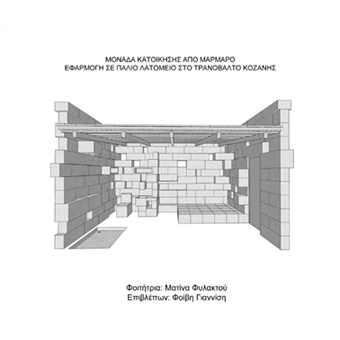

Studying all the stages of work by the excavation up to the final use of marble I decided to experiment with how could the marble be used for the layout of walls of residence with the simultaneous creation of constant furnishing. Using marble stones in combination with plates of marble I made trials in such type manufactures. The course of planning of these manufactures me led to the determination of specific dimensions of marble stones. Then, I drew test units of living from marble. The application of a specific unit of living becomes in one of not active quarry of marble in the Tranovaltos Kozani’s. Aim of proposal is to give life in the not active quarry with a new activity relative with the marble. I thought that the big number of marble stones that remained there unexploited they could be used for the manufacture of units of living. There they might to remain for a small time interval at the aestival period artists in order to create using the marble of region. For the concretisation of this aim becomes configuration of existing situation of quarry and is created the infrastructure for the installation of units of living and the exploitation of environment area.
Supervisor: Giannisi Phoebe
Reference Number: 157


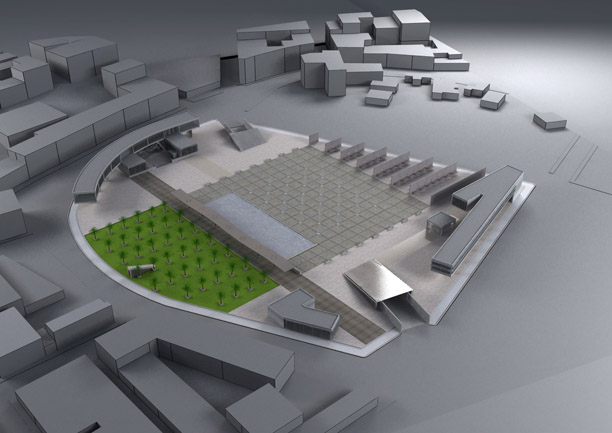

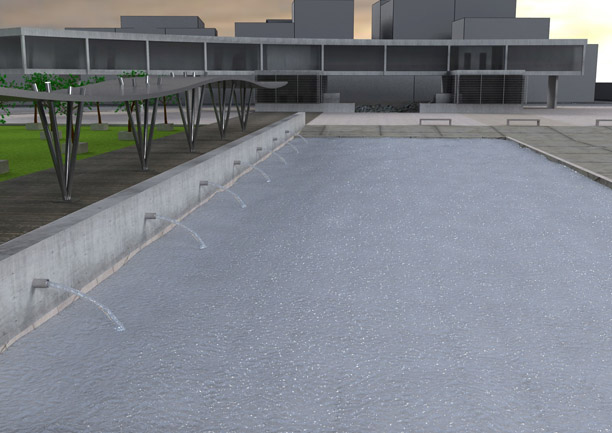





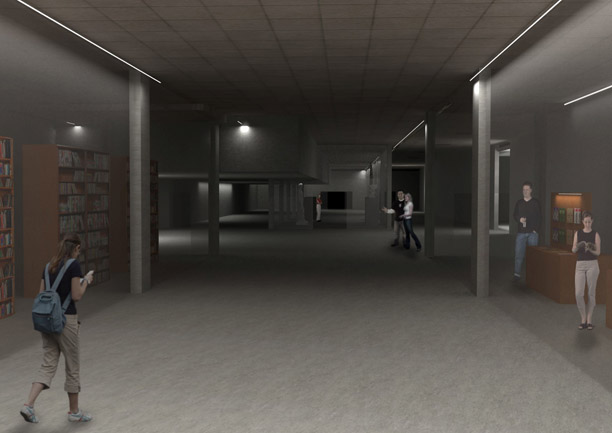

The selection of Farsala city for the creation of a museum complex is due to the fact that this city, which has a long history extended from the antiquity to the late years, presents a unique archaeological interest. This is supported by archaeological findings which come to light from time to time. The existence of a citadel and a vaulted grave proves the distinctiveness of the area. Moreover, this archaeological interest is enhanced by the fact that Farsala is considered to be the city where Achilles was born and grown up. Furthermore, Farsala city is one of the most important centers as it is in the heart of Thessaly and there is easy access to it from the four big cities (Larissa – Volos – Trikala – Karditsa).
Based on the data of the area in which the building plot is located, which relate to the existence of the spring of Apidanos river (according to the mythology Achilles was baptized in this area), with the intense commercial and educative activity as well as the existence of Farsala bus station (KTEL), it is suggested the creation of a complex which will cover many necessities of the area. Another equal important incentive for its creation is that there is not a similar complex in the area of Farsala.
The suggested building complex, which will consist of a museum, a library, a guest house and places of entertainment combined with the rest parts of the complex as well as the creation of a square, will cover a series of cultural, educative and recreational necessities.
Supervisor: Papadopoulos Spiros
Reference Number: 187
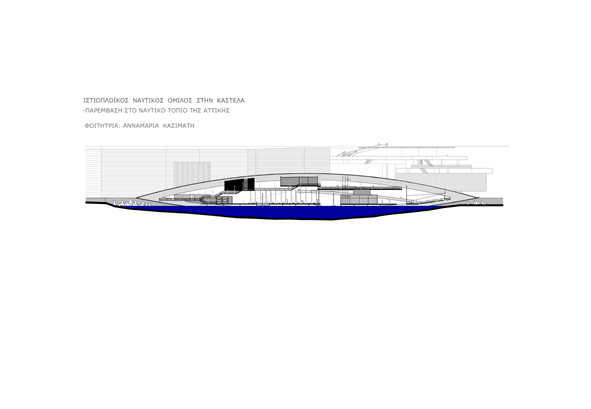

At Microlimano, at an end of the Kastela hill, there is a plan for a sailing club consisting of all the appropriate infrastructure facilities and equipment, including training and recreation. The plan is beyond the local politics, where questions regarding the management of the limit between land and sea are placed. Through an analysis of the forces exercised in the region, the stand of the user towards the landscape is investigated.
The place of intervention constitutes an important point of the coastline, as it “stands” opposite to a powerful topography. The point is located at the end of the land, under the largeness of Kastela’s hill, at an unobscured opening to the Saronic Gulf. Characteristics of the place, such as the limit of the seashore, the height of the buttress wall, the centrifugal force of turn are analysed and interpreted as the force of place. Elements of the place are received as constants which are analysed into basic physical principles and set questions of handling. The sea level is taken as a reference. The seashore, as an erratic limit, sets the question of handling the limit between land and sea. The planning of the space is dealt as a continuity of the place’s interpretation.
What is planned is the construction of a square and the facilities of the sailing club. The square, as a public place, makes a passage to the next cove - a piece of the linear course of the coastline. The construction of the Club is right to the land-sea limit. The club is targeting a wide range of people, its objective being the teaching of sailing and the familiarization with the terms of the sea. In the construction 3 courses-movements are involved: the movement of the athletes, who are the permanent users of the installations, the movement of the students, who are the seasonal users and the movement of visitors-sightseer, who have access in areas above the sea level, with the possibility of observation of natural phenomena of the water sports, as well as the surveillance of the functional procedures of sailing. The installations include space for parking and anchorage of yachts, storages, w.c., dressing rooms, gym, a gathering place for the athletes, teaching rooms, secretariat, bar and a semi-open-air amphitheatre. The installations are mainly semi-open-air and occupy 30% of he total volume. The general dimensions of the construction are 130 m Χ 20 m elevated at 18 m from sea level. The basic structural element is the cell which accommodates the club’s facilities. The cell is fusiform and is constituted by two symmetric curved elements by prestressed armed concrete. The structure is partly sunk under the surface of sea and its basis rests totally in the subsoil. The installations, following the functional needs, they are either suspended from the cells upper part, or they are resting at its lower part and they are made of metal, wood or glass.
Through this construction, the surrounding landscape and the optical contact with the space, one can experience the human relation with the landscape. Furthermore, the human position towards the ground limits is redefined.
Supervisor: Paniyiris Costis
Reference Number: 192
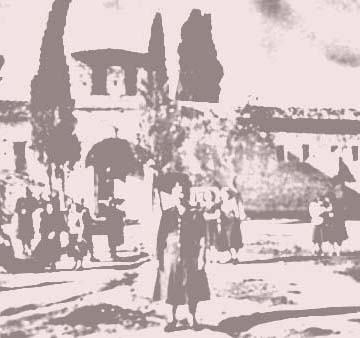

The diploma work includes study of history of the island, physiognomy, his natural elements and mainly his values. All these helped to the formation of a path that connects the greatest places of the island, to point them and get easy access to them. At the same time it was made the effort in order, through the transformation of this course, to be impressed in this, on the ground, the history of the island and to bring in the visitor abundance of sentiments combining the delectation of walk and the knowledge for the place where it visits.
First contact with the island , the settlement in his small harbour. There, where afterwards the civilian, anchor the boat which transported from Volos in the banisheds, timber and foods. The region is searched by the eyes of the visitor and it is followed the course to the monastery. The ascent to the adoration creates sentiments, queries, and need for transformation. This need springs from the thirst for compurgation and purgation. In the path it is observed the natural element, with abrupt bents and configurations in the ground that prepare for what it will follow. The olive groves in abundance participate in the sentimental elation and delimit the course to the monastery.
There, in the top of the island, the pictures and the experiences from the ascent are completed and it begins the reverse course (descent) in the place of memory. The ground becomes tough and brings up the difficult history that includes for years. The remains of the individual residences of banished women undertake the difficult work of recollection. The visitor feels debt for the resurgence of the place and awe for the history that encompasses. The course leads to the beach of Pardalou where the sentiments are defused and befalls the purgation.
Supervisor: Kotionis Zissis
Reference Number: 158

